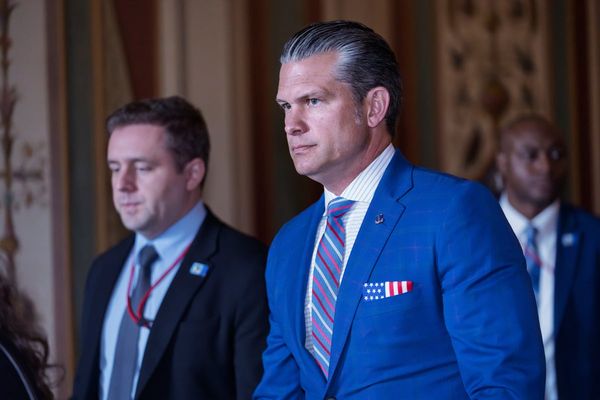In the 2004 film, Mean Girls, Cady (Lindsay Lohan) is invited to a Halloween party. Previously homeschooled, Cady dresses as a zombie bride, but is shocked to find her peers wearing much more suggestive costumes. “In girl world”, Cady muses, “Halloween is the one time a year when a girl can dress like a total slut, and no other girls can say anything about it.”
One of those girls, Regina George (Rachel McAdams), is wearing one of the most culturally significant costumes of the last decade: the Playboy bunny suit.
Originally designed in 1960 as a uniform for female workers of the Playboy clubs, the Playboy bunny suit was the first service uniform to be patented in the US. Yet despite this, the costume has been replicated and sold by numerous fashion retailers (sometimes attracting legal action by Playboy), becoming one of the most prevalent fancy dress and Halloween costumes.
Every October the instantly recognisable Playboy bunny suit – with it’s corseted bodysuit, ears, tail, cuffs, collar, bow tie, and name-tag rosette on the hip – is the costume of choice for celebrities such as Kylie Jenner and Paris Hilton, and normies alike.
The history of the Playboy bunny suit
The bunny suit’s origin has been subject to much misinformation. It has been falsely reported that the suit was designed by Zelda Wynn Valdes, known for her figure-hugging designs for clients such as Ella Fitzgerald and Josephine Baker.
Though the story that it was created by an under-recognised black designer is compelling, the truth is that many different hands went into the creation of the suit.
While Wynn Valdes did create bunny suits for the New York Playboy Club, the original concept came from Ilsa Taurins, the girlfriend of a former Playboy promotions director. Her mother sewed the first prototype.
Since it’s debut in 1960, the bunny suit has been seen in numerous colours and patterns – even once made entirely of chocolate – but the design has remained largely unchanged.
In 1963, journalist and activist Gloria Steinem spent two weeks working undercover as a bunny in the New York Playboy Club researching her two part exposé, A Bunny’s Tale.
Steinem critiqued Playboy’s treatment of bunnies, drawing attention to the discomfort of long shifts wearing the costume, violating examinations by a Playboy-affiliated doctor and the egregious merit/demerit system laid out in the employee manual.
Bunnies could receive demerits for a long list of perceived errors, including unkempt hair, chewing gum or incorrectly bent bunny ears.
But not everyone agreed. Kathryn Leigh Scott, author of The Bunny Years (1998), worked alongside Steinem during her undercover stint. She claims that the reality of working as a bunny was more nuanced than Steinem portrayed. According to Scott, the club provided an opportunity to travel and earn a decent wage in a time where there were less opportunities for women in the workforce.
The last of the original US Playboy clubs closed in 1988 and attempts to reopen them in Las Vegas and New York have been short-lived, but the bunny remains a contentious subject of feminist debate.
In the recent docuseries Secrets of Playboy (2022), former bunnies came forward with accounts of sexual harassment and assault in Playboy clubs. However, many women who have worn the costume both for work and leisure have also claimed that they find the Playboy bunny suit sexually empowering.
The rise of the ‘sexy’ Halloween costume
The rise in popularity of the Playboy bunny as a Halloween outfit can be linked to the increase in popularity of the “sexy” Halloween costume. In the US, modern adult Halloween costumes entered the cultural zietgeist in the 1970s. Writing for Time magazine, journalist Laura Stampler credits this to LGBTQ+ Halloween parades, which encouraged outlandish and creative costumes.
By the 1990s and 2000s, Halloween costumes reflected the the rise of postfeminist, overtly sexualised media representations of women. Sexy costumes began to dominate Halloween parties, offering a campy reflection of pop culture.
Despite changing times, browse any website selling Halloween costumes and variations of the Playboy bunny costume still pop up. This continuing popularity could partly be due to Playboy’s lasting cultural impact (the brand turned 70 this year). Or it could be due to a perceived distinction between the iconic “bunnies” and the Playboy brand.
The costume’s appearance in media from anime such as Dragon Ball, to films such as Legally Blonde and Bridget Jones’s Diary has led to the Playboy bunny becoming a pop culture icon in her own right.
Embodying the Playboy bunny
Call me a bad feminist, but I love the Playboy bunny costume. In November 2017, while studying for my MFA in Chicago at an institution that was once gifted the original Playboy Mansion, I flew to New York to attend a bunny casting.
Unlike Steinem, my attempt to go undercover proved fruitless. On reflection, I wanted to go through the Playboy bunny casting process because I wanted to know what it felt like to wear the suit.
In 2021, my friend Amber Sylvia and I set out to create the bunny suit of my dreams. Embellished with over 10,000 rhinestones, my suit celebrates the countless women of Playboy, who continue to inspire both my research and art practices.
Dressed as a Playboy bunny, I realised why – over 60 years on – it continues to be a popular costume choice. I became an exaggerated version of myself. The ears and heels made me stand taller while the corseting exaggerated my feminine features.
Regina George made a smart Halloween costume choice. For me, the Playboy bunny represents feminine sexuality in it’s most playful and heightened form. And considering its history – originally crafted for the enjoyment of male Playboy club patrons – it’s a little spooky, too.

Looking for something good? Cut through the noise with a carefully curated selection of the latest releases, live events and exhibitions, straight to your inbox every fortnight, on Fridays. Sign up here.
Daisy McManaman does not work for, consult, own shares in or receive funding from any company or organisation that would benefit from this article, and has disclosed no relevant affiliations beyond their academic appointment.
This article was originally published on The Conversation. Read the original article.







